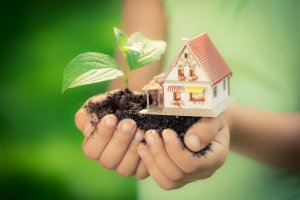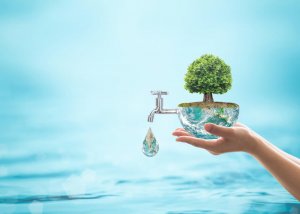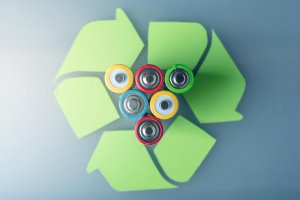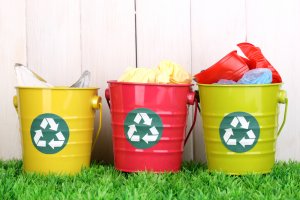How to Make Your Home Eco Friendly

Global warming is one of the biggest challenges mankind has ever faced. But what can we do to stop it? In simple terms, stop consuming, or failing that, consume as little as possible. For many people, the idea of creating an eco-friendly home made from natural materials is becoming more and more interesting.
But creating an eco-friendly home doesn’t just mean using natural building materials. You’ll also need to furnish and decorate using methods and resources that respect the environment. Bioclimatic architecture and design can help you to achieve this.
When it comes to choosing your insulation, use materials such as cob, adobe or straw. That way, you can create a house that’s eco-friendly, and cut heating and air conditioning costs at the same time. You could also install a composting toilet that doesn’t use water, as well as water collection and treatment systems.
Let’s make your home an eco-friendly place
Temperature

First, we recommend taking a closer look at your windows, as it’s there that most heat is lost from our homes. Improve your insulation with double-glazing and check that your current windows are energy efficient.
No one needs to come home in the middle of winter and feel like they’ve walked into a tropical rainforest.
According to the Spanish Institute for Diversification and Energy Saving (IDAE), 66% of domestic energy expenditure goes on heating water and our homes. They also found that in winter, “a temperature between 66 and 70°F should be more than enough. At night, you only need to heat your bedrooms to 59 – 63 degrees to be comfortable“. So, make sure to wrap up before you decide to heat up.
Eco-friendly homes – top tips for saving water

If you want to reduce your water consumption, you can buy attachments for your faucets, such as aerators, diffusers or flow regulators. In traditional faucets, the average consumption is 4 gallons per minute. However, if you use one of these water-saving solutions, you can reduce your consumption to 1 – 2 gallons per minute. In other words, you can cut your water usage by around 50%.
Eco lighting

An eco-friendly house should take full advantage of natural sunlight. When you need to use electric lights, try swopping your ordinary light bulbs for LED ones. LED light bulbs don’t contain mercury or produce greenhouse gases. They also have a much longer lifespan and use less energy.
Eco-friendly homes – make your own cleaning products

Making your own products is easier than you think. You’ll help prevent thousands of plastic containers from ending up in landfills and, in the long-run, save yourself thousands of dollars.
When it comes to cleaning your house, vinegar and baking soda are a winning combination. And for yourself, there’s nothing better than making your own shampoo.
Avoid batteries

A single alkaline battery can contaminate over 26000 gallons of water. Needless to say, you should always take them to specialist recycling points rather than simply throwing them in the trash. However, you can go one step further, and avoid buying them altogether. Try to look for rechargeable or battery-free devices. If there really is no other option (such as remote controls), buy a set of rechargeable batteries instead.
Eco-friendly homes – use your dryer as little as possible

By hanging your laundry outside rather than using the dryer, in one year, you can save up to 100 lbs of CO2 – one of the most common greenhouse gases – as well as the 700 lbs worth of CO2 needed to make the machine itself.
Reuse and recycle as much as you can

Don’t throw things away. The majority of items can be repurposed and reused in original and interesting ways. All it takes is a little creativity. Creating furniture out of old wooden pallets, toys out of milk cartons and vases out of glass bottles are just some of the many ways you can reduce, reuse and recycle on a daily basis.
An eco-friendly house is an option that respects the planet and will help you save money. So, what are you waiting for?
Global warming is one of the biggest challenges mankind has ever faced. But what can we do to stop it? In simple terms, stop consuming, or failing that, consume as little as possible. For many people, the idea of creating an eco-friendly home made from natural materials is becoming more and more interesting.
But creating an eco-friendly home doesn’t just mean using natural building materials. You’ll also need to furnish and decorate using methods and resources that respect the environment. Bioclimatic architecture and design can help you to achieve this.
When it comes to choosing your insulation, use materials such as cob, adobe or straw. That way, you can create a house that’s eco-friendly, and cut heating and air conditioning costs at the same time. You could also install a composting toilet that doesn’t use water, as well as water collection and treatment systems.
Let’s make your home an eco-friendly place
Temperature

First, we recommend taking a closer look at your windows, as it’s there that most heat is lost from our homes. Improve your insulation with double-glazing and check that your current windows are energy efficient.
No one needs to come home in the middle of winter and feel like they’ve walked into a tropical rainforest.
According to the Spanish Institute for Diversification and Energy Saving (IDAE), 66% of domestic energy expenditure goes on heating water and our homes. They also found that in winter, “a temperature between 66 and 70°F should be more than enough. At night, you only need to heat your bedrooms to 59 – 63 degrees to be comfortable“. So, make sure to wrap up before you decide to heat up.
Eco-friendly homes – top tips for saving water

If you want to reduce your water consumption, you can buy attachments for your faucets, such as aerators, diffusers or flow regulators. In traditional faucets, the average consumption is 4 gallons per minute. However, if you use one of these water-saving solutions, you can reduce your consumption to 1 – 2 gallons per minute. In other words, you can cut your water usage by around 50%.
Eco lighting

An eco-friendly house should take full advantage of natural sunlight. When you need to use electric lights, try swopping your ordinary light bulbs for LED ones. LED light bulbs don’t contain mercury or produce greenhouse gases. They also have a much longer lifespan and use less energy.
Eco-friendly homes – make your own cleaning products

Making your own products is easier than you think. You’ll help prevent thousands of plastic containers from ending up in landfills and, in the long-run, save yourself thousands of dollars.
When it comes to cleaning your house, vinegar and baking soda are a winning combination. And for yourself, there’s nothing better than making your own shampoo.
Avoid batteries

A single alkaline battery can contaminate over 26000 gallons of water. Needless to say, you should always take them to specialist recycling points rather than simply throwing them in the trash. However, you can go one step further, and avoid buying them altogether. Try to look for rechargeable or battery-free devices. If there really is no other option (such as remote controls), buy a set of rechargeable batteries instead.
Eco-friendly homes – use your dryer as little as possible

By hanging your laundry outside rather than using the dryer, in one year, you can save up to 100 lbs of CO2 – one of the most common greenhouse gases – as well as the 700 lbs worth of CO2 needed to make the machine itself.
Reuse and recycle as much as you can

Don’t throw things away. The majority of items can be repurposed and reused in original and interesting ways. All it takes is a little creativity. Creating furniture out of old wooden pallets, toys out of milk cartons and vases out of glass bottles are just some of the many ways you can reduce, reuse and recycle on a daily basis.
An eco-friendly house is an option that respects the planet and will help you save money. So, what are you waiting for?







